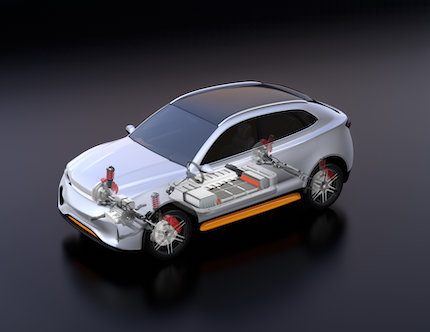When someone says electric vehicles (EVs), many people immediately think of Tesla (TSLA). But from an investment viewpoint, there’s a lot more to the industry than just one company.
My favored EV subsector is the supply chain. Without batteries, there is no EV industry. And without the necessary raw materials, there would be no batteries.

That’s why my attention was grabbed by a recent Nikkei Asia article, reporting: “The price of batteries for electric vehicles looks set to rise in 2022 following a decade of sharp decline as supplies of lithium and other raw materials fail to keep up with ballooning demand.”
Keep in mind this follows a decade of sharp declines in the cost of electric vehicle batteries. Any such increases could undermine the technological/efficiency gains that produced longer-life, higher-performance batteries in recent years, all while reducing costs.
Sales of EVs had just started to really gain traction before this news. According to Bloomberg NEF, global electric car sales are estimated to have reached 5.6 million vehicles in 2021, up from 3.1 million in 2020, thanks to robust sales in China.
Soaring EV Metals Prices
But now, soaring prices for lithium and other necessary commodities used in batteries may throw a wrench in the global auto industry’s ambitious plans for electrification, even as more companies, including Toyota, embrace targets for electric vehicle production.
The benchmark prices of lithium carbonate ended 2021 at record numbers. In China—the biggest battery-producing country in the world—the price was 261,500 yuan (just over $41,060) per ton. That is more than five times higher than it was last January!
Other commodities used in cathodes (the most expensive part of a battery) have also been rising. For example, the price of cobalt has doubled since last January, to $70,208 per ton.
According to a December report from S&P Global Market Intelligence, further demand growth for electric vehicles in 2022 will mean a lithium deficit this year, as use of the material outstrips production and depletes stockpiles.
The report said that supply could jump to 636,000 metric tons of lithium carbonate equivalent in 2022, up from an estimated 497,000 in 2021. However, demand will jump even more, to 641,000 tons, from an estimated 504,000.
It Is Different This Time
This is drastically changing from how lithium prices acted in the past. Previously, after a short boom, prices would crash, with many smaller industry players wiped out.
But no longer.
In a research report, Wood Mackenzie said that lithium prices are unlikely to crash as they did in previous cycles: “We’re entering a sort of new era in terms of lithium pricing over the next few years, because the growth will be so strong.”
I believe Wood Mackenzie is spot on. There are a few factors at work limiting supplies.
First, several producers in Australia closed down their mines in 2020 because of the aforementioned period of low prices. And now, the pandemic has made it difficult to rehire workers and bring production back to pre-pandemic levels.
Second, in China, the lithium-processing companies that make lithium carbonate have been affected by restrictions on power use introduced in the autumn. Though some restrictions have eased, companies are struggling to catch up.
So far, the expected battery price increases are small. According to Bloomberg NEF, prices of lithium-ion battery packs were more than $1,200 per kilowatt-hour in 2010, but plummeted to $132 by 2021; however, average prices could rise to $135 per kilowatt-hour in 2022.
EV Materials Investment
We all know the problems automakers have faced in the last year from the semiconductor shortage.
But now, sourcing battery raw materials could be just as problematic for many carmakers. Some of them may not be able to produce electric vehicles in the numbers planned, due to shortages of raw materials for batteries.
That’s why an investment into the EV materials sector makes sense. The easiest way to do this is through an exchange traded fund (ETF).
The VanEck Rare Earth/Strategic Metals ETF (REMX) is a nicely broad-based ETF in this sector. Its largest exposure is to Australian stocks (43.5%). Among its top position are such well-known companies in the sector as Pilbara Minerals, Lynas Rare Earths, Allkem, Standard Lithium, MP Materials,and Lithium Americas. Any price in the $100 to $115 range is a good entry point price.





